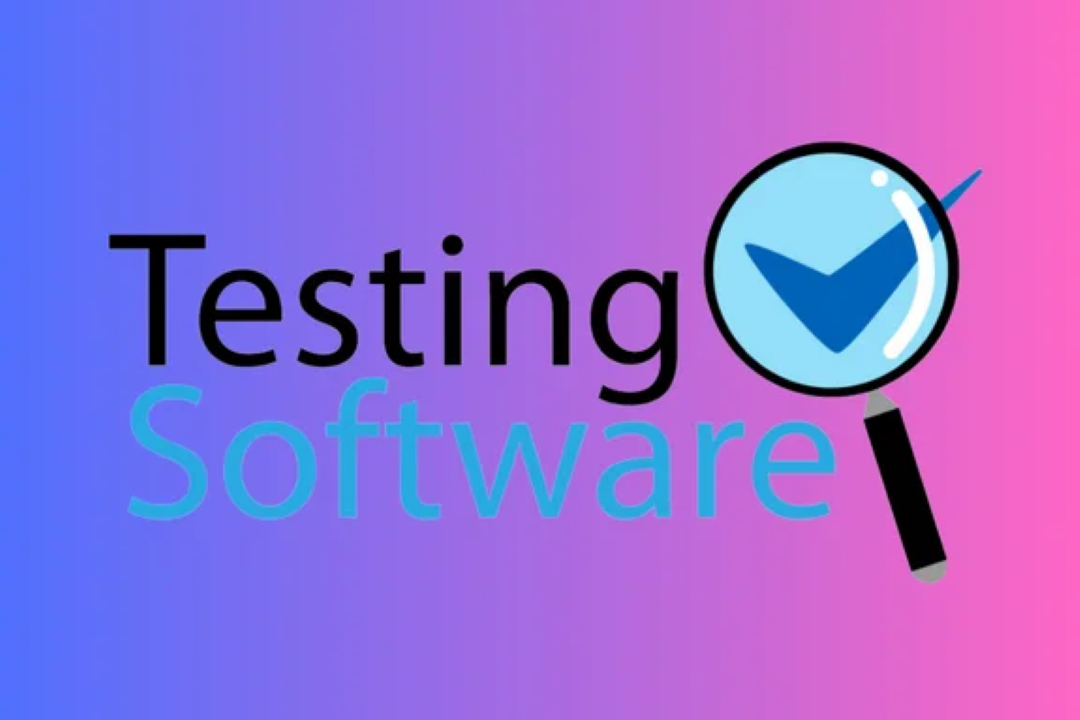What Are Defect Tracking Tools Required For Manual Testing
Defect tracking tools are software applications used in manual testing to identify, record, and mana
What Are Defect Tracking Tools Required For Manual Testing
Defect tracking tools are essential for manual testing as they provide a structured approach to identifying, managing, and resolving defects within software products. These tools allow testers to document issues comprehensively, including details such as severity, status, and steps to reproduce the bug. By delivering a centralized platform for defect management, they enhance collaboration among developers, testers, and stakeholders, ensuring that all teams are aligned on defect status and prioritization. This not only streamlines the testing process but also improves communication, accountability, and the overall quality of the software being developed, ultimately leading to a more efficient development cycle and a better end product for users.
To Download Our Brochure: https://www.justacademy.co/download-brochure-for-free
Message us for more information: +91 9987184296
Defect tracking tools are essential for manual testing as they provide a structured approach to identifying, managing, and resolving defects within software products. These tools allow testers to document issues comprehensively, including details such as severity, status, and steps to reproduce the bug. By delivering a centralized platform for defect management, they enhance collaboration among developers, testers, and stakeholders, ensuring that all teams are aligned on defect status and prioritization. This not only streamlines the testing process but also improves communication, accountability, and the overall quality of the software being developed, ultimately leading to a more efficient development cycle and a better end product for users.
Course Overview
The “What Are Defect Tracking Tools Required for Manual Testing” course offers an in-depth exploration of essential defect tracking tools utilized in manual software testing. Participants will learn about the importance of defect management, how to effectively document and categorize defects, and the best practices for utilizing these tools to enhance collaboration among development and testing teams. Through real-time projects and practical examples, learners will gain hands-on experience in tracking, prioritizing, and resolving defects, equipping them with the skills necessary to ensure high-quality software delivery. This course is ideal for aspiring testers seeking to strengthen their understanding of defect tracking in the software development lifecycle.
Course Description
The “What Are Defect Tracking Tools Required for Manual Testing” course provides a comprehensive overview of vital tools used for identifying, documenting, and managing defects in software applications. Participants will explore various defect tracking systems, learn best practices for documenting issues, and understand how these tools facilitate better communication between development and testing teams. Through hands-on projects, attendees will gain practical experience in using defect tracking tools to streamline the testing process, prioritize bug fixes, and ultimately ensure the delivery of high-quality software products. This course is perfect for manual testers seeking to enhance their skills in defect management and improve software quality outcomes.
Key Features
1 - Comprehensive Tool Coverage: Provides hands-on training with a range of industry-standard testing tools, including Selenium, JIRA, LoadRunner, and TestRail.
2) Practical Exercises: Features real-world exercises and case studies to apply tools in various testing scenarios.
3) Interactive Learning: Includes interactive sessions with industry experts for personalized feedback and guidance.
4) Detailed Tutorials: Offers extensive tutorials and documentation on tool functionalities and best practices.
5) Advanced Techniques: Covers both fundamental and advanced techniques for using testing tools effectively.
6) Data Visualization: Integrates tools for visualizing test metrics and results, enhancing data interpretation and decision-making.
7) Tool Integration: Teaches how to integrate testing tools into the software development lifecycle for streamlined workflows.
8) Project-Based Learning: Focuses on project-based learning to build practical skills and create a portfolio of completed tasks.
9) Career Support: Provides resources and support for applying learned skills to real-world job scenarios, including resume building and interview preparation.
10) Up-to-Date Content: Ensures that course materials reflect the latest industry standards and tool updates.
Benefits of taking our course
Functional Tools
1 - JIRA: JIRA is one of the most widely used defect tracking tools in the software development industry. Developed by Atlassian, it helps teams plan, track, and manage agile software development projects. JIRA allows testers to create detailed defect reports, prioritize issues, and assign them to team members. Its powerful integration capabilities with other tools used in agile workflows, like Confluence and Bitbucket, make it an essential tool for any testing team. With customizable workflows, JIRA enables flexibility in defect management processes, ensuring that the specific needs of a project are met.
2) Bugzilla: Bugzilla is an open source defect tracking tool that provides a solid framework for managing defects and bugs. It enables teams to file and track bugs throughout the software development lifecycle. Bugzilla offers features such as advanced search capabilities, robust reporting tools, and email notifications to keep all stakeholders informed. Its adaptability makes it suitable for both large and small projects, allowing users to set custom fields and workflows tailored to their specific requirements.
3) Trello: Trello is a visual project management tool that can also be utilized for defect tracking. Using boards, lists, and cards, Trello allows teams to organize and prioritize defects seamlessly. Each card can represent a specific defect, and teams can add detailed descriptions, attach files, and comment on progress. Its user friendly interface makes it easy for manual testers to adopt and track defects quickly. Trello’s flexibility ensures that teams can manage their defect tracking processes in a way that aligns with their workflow.
4) Redmine: Redmine is a versatile project management web application that includes defect tracking as one of its key features. It supports multiple projects and offers features like customizable issue tracking, Gantt charts, and calendar views to monitor project timelines. Redmine is also extensible, with numerous plugins available to enhance its functionality. The ability to integrate with version control systems adds value to manual testing teams as they can better manage defects in context to the specific versions of the software.
5) MantisBT: Mantis Bug Tracker (MantisBT) is another open source issue tracking tool that is user friendly and efficient for defect management. It offers a simple interface that allows both technical and non technical users to report bugs without difficulty. Key features include email notifications, project management capabilities, and customizable fields to suit the unique needs of different projects. MantisBT also supports time tracking for issues, providing insights into how long defects are taking to resolve.
6) HP ALM (Application Lifecycle Management): HP ALM, formerly known as Quality Center, is a comprehensive tool that helps teams manage the entire software development lifecycle, including defect tracking. This tool provides robust features for planning, tracking, and releasing software, making it a vital resource for organizations looking for an integrated solution. HP ALM supports manual testing processes with its extensive reporting capabilities, providing insights into defect trends and project health. The tool’s ability to facilitate collaboration among stakeholders is essential for effective defect resolution and maintaining high quality standards in software development.
Certainly! Here are additional points highlighting various defect tracking tools beneficial for manual testing teams:
7) Asana: Asana is a project management tool that functions effectively for defect tracking as well. It provides a simple and intuitive interface where teams can create tasks for each defect, assign them to relevant team members, set due dates, and track progress. The visual timeline feature helps teams understand timelines for defect resolution and prioritize based on urgency. Asana also integrates with various applications, allowing teams to streamline their workflows.
8) YouTrack: YouTrack, developed by JetBrains, is a powerful defect tracking tool designed specifically for agile teams. Its features include customizable workflows, extensive reporting, and querying capabilities, making it suitable for managing defects alongside project tasks. The built in time tracking functionality assists teams in measuring how long it takes to resolve defects. YouTrack’s agile board functionality helps teams visualize their workflow and manage defects efficiently within their sprint cycles.
9) Clubhouse (now Shortcut): Shortcut is an agile project management tool that includes strong defect tracking capabilities. It provides a straightforward interface for managing stories, tasks, and bugs in one place. Teams can prioritize defects, link them to user stories for context, and manage them through its workflow feature. Shortcut also allows for easy reporting and analytics, providing insights into defect trends and team performance, enabling teams to improve their processes over time.
10) Zoho BugTracker: Zoho BugTracker is a cloud based defect tracking tool that offers a range of features suited for manual testing teams. It allows users to log defects, categorize them, and assign them to team members for resolution. The tool's real time notifications keep everyone updated on the status of defects, while customizable dashboards provide visual insights into the defect lifecycle. Zoho BugTracker also integrates seamlessly with other Zoho products, enhancing its utility in project management.
11 - GitHub Issues: GitHub offers an integrated issues feature that allows teams to track defects within their existing development workflow. Testers can create issues for bugs, categorize them using labels, and assign them to developers directly within the repository. This close integration with version control helps teams maintain context around changes and resolution efforts. The ability to link commits to issues also enhances traceability, making it easier to understand which changes addressed specific defects.
12) TestRail: TestRail is primarily a test management tool, but it also provides functionalities for tracking defects. Teams can log bugs directly from test results, link defects to specific test cases, and manage them throughout the testing lifecycle. TestRail’s reporting features help teams identify trends in defects and assess testing effectiveness. The seamless integration with other bug tracking tools enables teams to combine their testing and defect management processes efficiently.
13) Qase: Qase is another test management tool that includes defect tracking capabilities, making it suitable for manual testers. It allows teams to manage test cases and track defects from a single platform. Users can create bug reports, organize them by severity, and track their resolution status. Qase provides integration with various third party tools, making it simple to connect with existing development workflows.
14) BugHerd: BugHerd is a visual feedback tool that caters especially to web developers and testers. It allows manual testers to report defects visually by pointing and clicking on elements of a website, making the reporting process straightforward for those who may not be technically inclined. Each report captures browser specifics, screen size, and other crucial information automatically, streamlining the defect logging process.
15) Freshservice: Freshservice is primarily an IT service management tool but includes defect tracking capabilities. It allows teams to log issues and manage them in a service desk format. The intuitive interface makes it easy to categorize defects, assign them to team members, and track their resolution. With additional features like automation and SLA management, Freshservice provides enterprise level capabilities for handling defects in larger organizations.
These additional points provide a broader perspective on defect tracking tools available for manual testers, showcasing their diverse features and benefits that can enhance defect management processes in various projects.
Browse our course links : https://www.justacademy.co/all-courses
To Join our FREE DEMO Session:
This information is sourced from JustAcademy
Contact Info:
Roshan Chaturvedi
Message us on Whatsapp: +91 9987184296
Email id: info@justacademy.co












